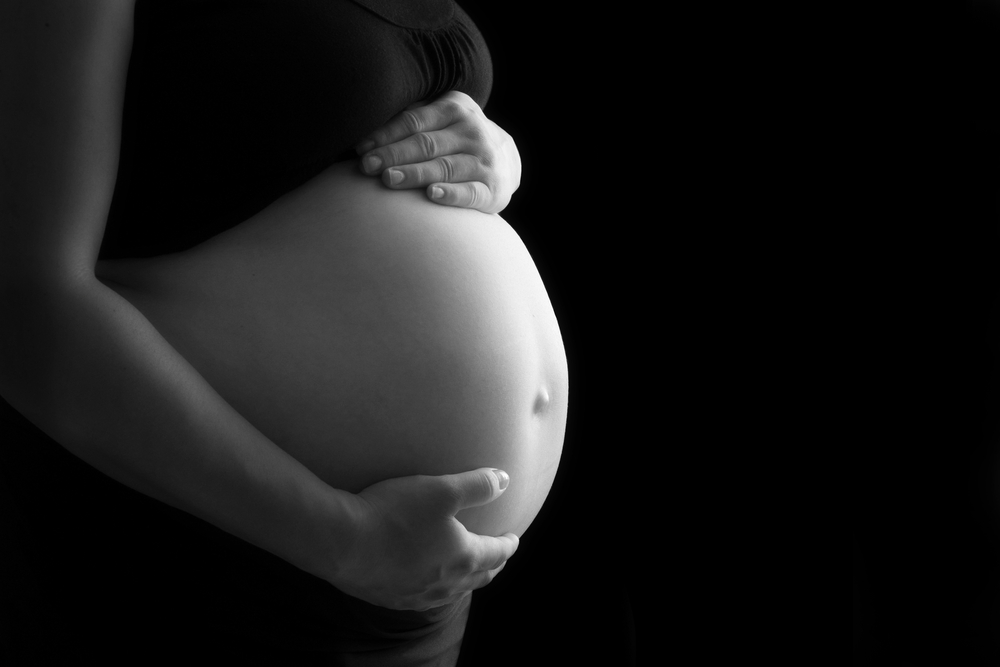Woman Develops Rare Cesarean Scar Condition, 5 Times

In a rare occurrence, a pregnant woman's gestational sac — the small vessel that holds the developing embryo — attached not to the lining of her womb but instead to a scar left over from a previous C-section. And it happened five times in a row, according to a recent report of the woman's case.
So-called cesarean scar pregnancies (CSPs) are not only rare — occurring in approximately 1 in 1,800 to 2,500 pregnancies — they can also be risky.
That's because when the pregnancy latches onto scar tissue as opposed to the typical implantation on the uterine lining, that increases the risk of a condition called "placenta accreta" or "morbidly adherent placenta," which can result in excessive bleeding for the mother, said Dr. Terri-Ann Bennett, an OB/GYN and maternal-fetal medicine specialist at New York University's Langone Health in New York City. [Blossoming Body: 8 Changes That Happen During Pregnancy]
This is worrisome given the fact that the rate of C-sections has increased in the past five decades, from 5 percent of deliveries in 1970 to 32 percent in 2015, according to the case report. Because of this, it's believed that CSPs are likely more common today than they were several decades ago.
Placenta accreta
Bennett noted that there's a lot of current research looking at how a CSP can affect a woman's health, particularly looking at a woman's risk of placenta accreta.
Normally, after delivery, the placenta is delivered from the body within 1 hour of the baby's birth, according to the World Health Organization. In placenta accreta, not only does the placenta not come out of the uterus as it should, but the placenta tissues actually grow deeper into the uterine wall. When the placenta isn't delivered normally, it can put a woman at risk for serious, and even deadly, bleeding, according to the American Congress of Obstetricians and Gynecologists.
Because of this risk, a woman who has a suspected CSP needs to be monitored very closely throughout her pregnancy to see if she is going to develop placenta accreta, Bennett told Live Science. Having a suspected CSP doesn't mean that a woman will absolutely develop a morbidly adherent placenta, she added, but it is considered a risk factor. If a woman does indeed develop a placenta accreta, she will require a preterm cesarean hysterectomy, or removal of the uterus, at the time of the delivery.
Sign up for the Live Science daily newsletter now
Get the world’s most fascinating discoveries delivered straight to your inbox.
Ideally, doctors would "be able to counsel moms and say, 'Your [chance] of a normal pregnancy is X and risk of accreta is Y,'" Bennett said, but currently, the data aren't available to quote those exact numbers to moms.
Five CSPs in a row
"Even today, the research [on cesarean scar pregnancies] is ongoing and very limited," Bennett said. Because of that, when the 35-year-old woman described in the case report was first suspected of having a CSP several years ago, the medical recommendation was to strongly consider terminating the pregnancy, because of the risk to the mother and the fetus. [7 Ways Pregnant Women Affect Babies]
"There was a great concern that these pregnancies were extremely risky and could even be life-threatening," Bennett said.
In the woman's case, which was detailed in the case report published Nov. 5 in the journal Ultrasound in Obstetrics & Gynecology, after she had two healthy C-section deliveries, she got pregnant four more times. Each time, she was told she had a cesarean scar pregnancy, and the pregnancy was terminated.
Bennett first met the woman in early 2015, after the four CSPs. "When she got pregnant for the fifth time … she was very aware of scar pregnancies … and already suspected" she had one, Bennett said.
Indeed, when the doctors gave the woman an ultrasound, the findings looked suspicious. The gestational sac (the sac filled with amniotic fluid that holds the fetus) was in the lower portion of the uterus, seemingly close to the old C-section scar, Bennett said. In addition, the implantation site was "hypervascular," meaning that there were more blood vessels than normal — a sign of a CSP. (Bennett noted that unless doctors can examine the uterine tissue, a caesarian scar pregnancy is "suspected" rather than "confirmed.")
Five CSPs in a row has never been reported in the medical literature, according to the case report.
But this time around, the woman decided to continue the pregnancy, with a full understanding of the risks, Bennett said. She was carefully monitored and got ultrasounds every two to four weeks. Early in the second trimester, however, it became clear that she was developing a retained placenta, according to the report. In addition, the placenta had formed over the woman's cervix (or opening into the uterus) — a condition called placenta previa — blocking the birth canal.
Because of these complications, the decision was made to perform a C-section delivery at 34 weeks into the pregnancy, followed by an immediate hysterectomy, according to the report.
The surgery went well in that the mom and baby went home healthy, Bennett said. But she noted that the operation was complex, and the woman lost so much blood that she needed a transfusion.
Ultimately, the "goal of obstetricians is to have a safe mom and a safe baby," Bennett said. But a secondary goal is "really to decrease the [number] of C-sections that are performed. … We try our best to decide if a mom really needs one or not, because there are consequences, not only during the delivery but for [a woman's] future pregnancies as well."
Originally published on Live Science.











